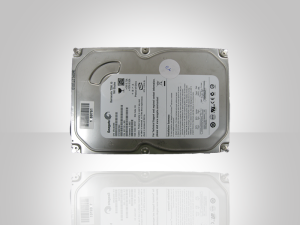1. Create a Sense of Community
Local stores are threatened by competition not just around the corner but in the next suburb and across the world. There is one thing the local store can do that a pure online store cannot do and that is provide that local sense of community that combines and synergizes both on-line and offline. Put up local news and provide information on your Facebook page that is relevant to your town or suburb and crystallizes your local community behind you. Since Facebook is a place for friends and family to share, making sure that you optimize your Facebook presence as a community portal is vital.
2. Offer One-off Specials
One of the main reasons people ‘like’ brands is so that they can receive specials. If you already have an on-line store you will want to treat your Facebook store as another distribution point on the web and as an extension of your store front, so providing web specials that are also on Facebook will keep them coming back.
3. Post Content that Amuses and Entertains
Attention spans are short and users’ news feeds get crowded awfully fast. So don’t limit wall postings to sale announcements and the like. Running items such as riddles and jokes, or simply posing open-ended questions to your Facebook fans about current events or pop culture on a daily basis ensures you stay on their mental radar and continue to keep you top of mind.
4. Increase Your Facebook ‘Likes’
Grow the Fan Base by acquiring more ‘likes’ is vital so that when you post an update you increase the likelihood that the special of content will appear in your potential customers news feeds.
5. Promote your Facebook Store in your “Bricks and Mortar” Store
Don’t forget to let your visitors in store know you are on Facebook and let them know that exclusive Facebook offers will be posted there regularly.
6. Grow Your Email Subscriber Database
In all the social networking hype quite often the continuing importance of capturing those all important emails is forgotten. Remember the email database is directly under your control and promotions that drive customers to your Facebook store can be sent out when you want to rather than relying on the Facebook ‘Edge Rank” to deliver news to your Facebook fans.
7. Provide Exclusive Offers
People like to feel special. The biggest reason people will ‘Like’ a retail brand on Facebook is the hope they’ll get a good deal out of it. So oblige them! Offer promotions, discounts and sales that are exclusive to your Facebook fans and they’ll keep coming back for more.
8. Attract New Facebook Fans with Incentives
Maintaining relationships with existing Facebook fans is important, but bringing more on board is how you’ll grow. Give a one-time promo code, coupon or something like discounted shipping to anyone who Likes your page. You’ll be pleasantly surprised at how quickly word of such specials spreads to others and then make it easy and obvious for them to ‘like’ your Facebook page.
9. Solicit Feedback
F-commerce relationships are a two-way street, and your fans provide a great resource in helping shape your Facebook presence. Ask them directly how you can improve that presence and employ the best ideas, if they’re feasible. This can only add to the quality of your relationships with fans.
10. Make Facebook a Public Relations Tool
Use your wall to post news articles about your company or to announce charitable and community service initiatives you’re involved with. Given the rather skeptical view most consumers have of business in general these days, positive public relations items go a long way towards solidifying your status as a quality company.
11. Incorporate Facebook into Customer Service
Supplement your existing customer service options through Facebook. Allow customer product reviews on your wall. Encourage fans to share their shopping experience with you. If the experience is a good one, thank them. If there is an issue, address the problem on your wall and offer a solution. By providing full transparency, you’re signaling to current and potential customers your commitment to their satisfaction. A first-time visitor to your Facebook store and fan page who sees you properly addressing a customer complaint will feel much better about doing business with you.
12. Add to and Enhance your Facebook Store
As new components like flash sales and contests become available on F-commerce platforms, take a look at each and figure out how best to use them. These are designed, in part, to make the F-commerce experience more social and fun, which is the whole point anyway!
13. Promote on Twitter
Don’t forget to use other social networking channels such as Twitter where specials can be posted that link to your landing page on your Facebook store shop front.
14. Use High Definition Videos and Images
Don’t forget that Facebook is a rich multimedia ecosystem and nothing quite captures the attention like a a high quality and iconic image.
15. Don’t Forget the Headline
Headlines are important to capture attention and this is often the first step in the sales process. Learn to write eye catching headlines.
F-commerce is not going to go away. Ensuring that you don’t become a statistic in the digital and social webs continuing disruption of traditional business models requires you to continue to adapt and evolve your business to current trends.
Have you thought about a Facebook Store shop front?
 Dell’s continued strategic focus on higher-value opportunities, combined with an increased mix of enterprise solutions and services sales, resulted in increased profitability on revenue of $15.4 billion in its third quarter, flat compared with revenue a year ago.
Dell’s continued strategic focus on higher-value opportunities, combined with an increased mix of enterprise solutions and services sales, resulted in increased profitability on revenue of $15.4 billion in its third quarter, flat compared with revenue a year ago.
You must be logged in to post a comment.